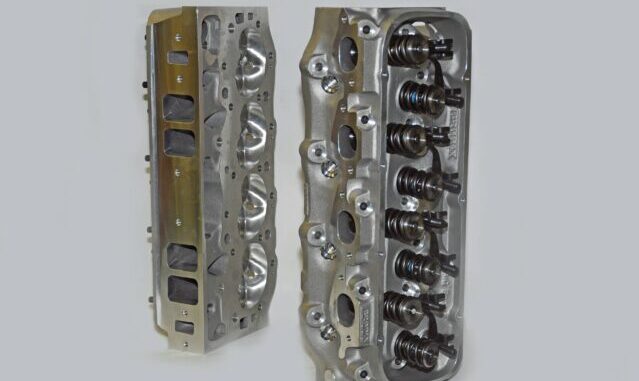
If you’ve been following this series, you’ll know we’ve been taking a detailed look at Brodix BB3 XTRA cylinder heads.
Need to catch up?
Head Games: Inside The Brodix BB-3 XTRA Lineup Part 1
Head Games: Inside The Brodix BB-3 XTRA Lineup Part 2
We looked at intake and exhaust port layout and flow, valve dimensions, rocker arm, stud girdle, and guide plate compatibility, the need for a raised rocker rail and more. But before we go any further, we should take a short look at Brodix’ casting operations. As we mentioned previously, there’s much more technology here than first meets the eye.
When Brodix started it was a jobbing foundry that manufactured all types of quality aluminum castings. According to Brodix: “Very high strength alloys were the specialty of Francis Dix, the “Dix” in Brodix. His family had a long history in the foundry industry. Along came J.V. Brotherton the “Bro” in Brodix and married Paula, the daughter of Francis and Dorothy Dix. J.V.’s hobby was racing automobiles.
“J.V. had a fascination with cylinder heads that ultimately led to the production of an aluminum Hemi head in 1971. Mopar reintroduced their aluminum Hemi head in 1972 and gave them to their racers. Needless to say, this was not a good thing for aftermarket Hemi sales. Regrouping, a small block Chevy head was made in 1973 and the rest has been history. The ability to make close tolerance, high strength castings has been the benchmark of Brodix.”
Roughly 55 years ago, the operation consisted of an old Induma mill, a Russian roughing mill, and an old radial drill. Today, the place bristles with dozens of CNC machining center and a number of other pieces of CNC equipment. The operation has a state-of-the art, in-house house dyno, a wet flow bench and of course, they still have their own foundry (as most know, not all cylinder head manufacturers perform their own casting).
With that in mind, Brodix has a couple of videos (sans commentary) you’ll probably find rather interesting. The first shows how they cast a big block Chevy cylinder head in their foundry:
The next link shows how a big block Brodix head goes from casting to completion. You might also find it noteworthy (I did):
Fair enough. We discussed flow in the last issue, but what about the porting “mechanics” found in the BB3 XTRA 345 heads? In both the intake and exhaust ports, the heads are partially CNC-machined. Essentially, the intake port is gasket matched while the bowls are blended. Matching the intake port to the gasket provides a good transition between the cylinder head and the intake manifold. A step or overlap here creates turbulence and obviously creates a flow restriction. Brodix points out that the most critical location for port matching is actually the top of the intake port. The reason being, this is where the port velocity is high and where you’ll see the highest intake flow volume.
That’s not the end of it either: In most heads, the bowls are bored by way of a mill. Because of this, there’s almost always a sharp transition to the port. That in turn creates turbulence and restricts port flow. Blending the bowls obviously takes care of the transition.
It’s pretty common for head porters to narrow and streamline the valve guide bosses within the bowl. Given the casting technology Brodix has, the bosses already have a very nice streamline shape.
On our subject cylinder heads, the valve face measures 2.30-inches on the intake side and 1.88-inches on the exhaust. Both intake and exhaust valves are stainless steel in this set of heads. Brodix (obviously) uses a bronze guide setup in heads and for this application, they use a positive stop, 0.529-inch Neoprene-Teflon valve stem seal on the intake side. Typically, no seal is used on the exhaust side, simply because it runs sufficiently hot to burn off any oil. In all engines, valve guides typically wear faster on the exhaust side too. This is also due to the added heat from the exhaust. Brodix advises that the majority of valve guide wear issues are caused by initial prep coupled with engine warm-up. Essentially, bronze guides cannot run dry for any length of time.
The valve seats installed on the BB3XTRA 345 heads are ductile iron. The intake seat measures 2.460-inches on the OD X 0.375-inches deep. Meanwhile, the exhaust seat measures 1.960-inches on the OD and it too is 0.375-inches deep. When it comes to the valve job for this application, Brodix incorporates a radius seat configuration. Basically, Brodix begins with a 45-degree cut, a 38-degree cut along with a tangent and then blends it. What this means is the break lines on the seats are carefully blended away to craft the smoothest possible transition.
We’ll end it right for this issue. Next time around, we’ll complete our look at the assembled “Big Brodie” – aka the BB3XTRA 345 cylinder head. In the meantime, check out the accompanying photos:
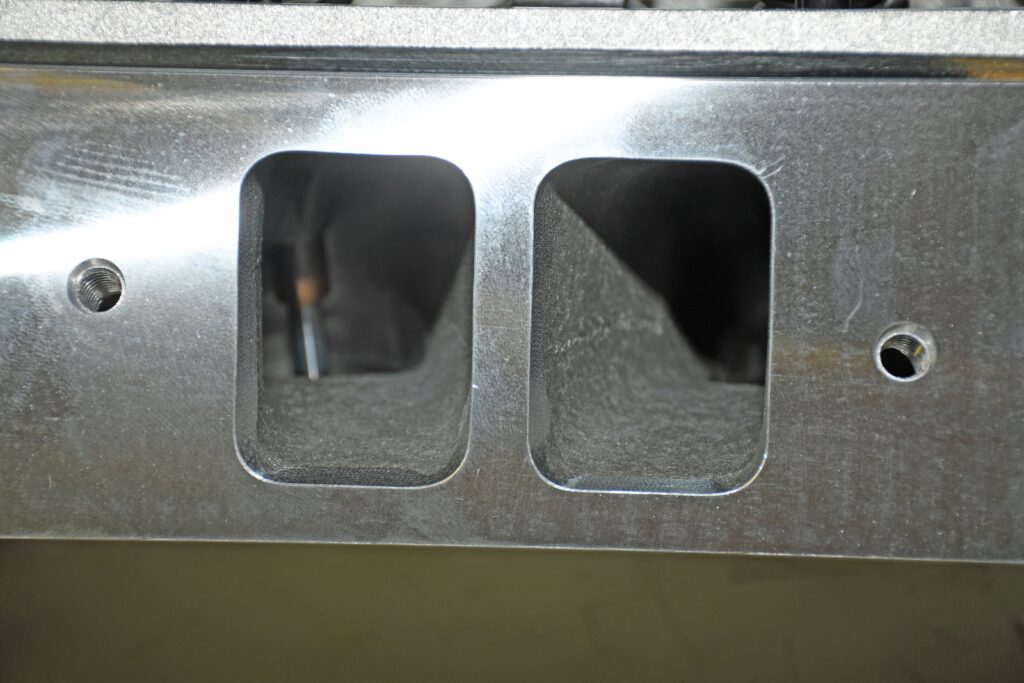
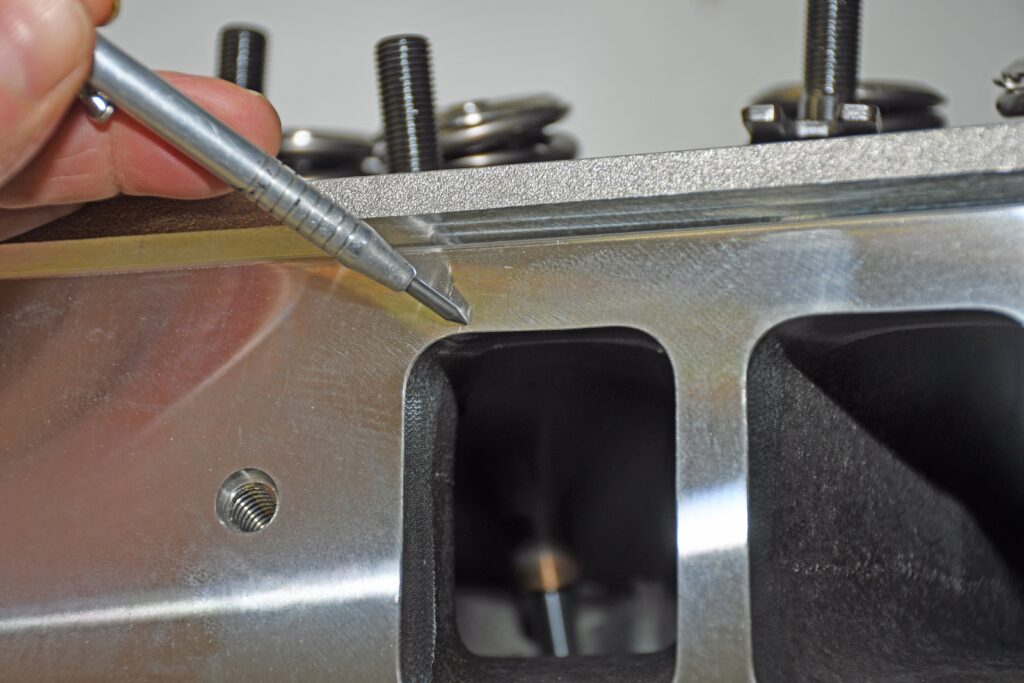
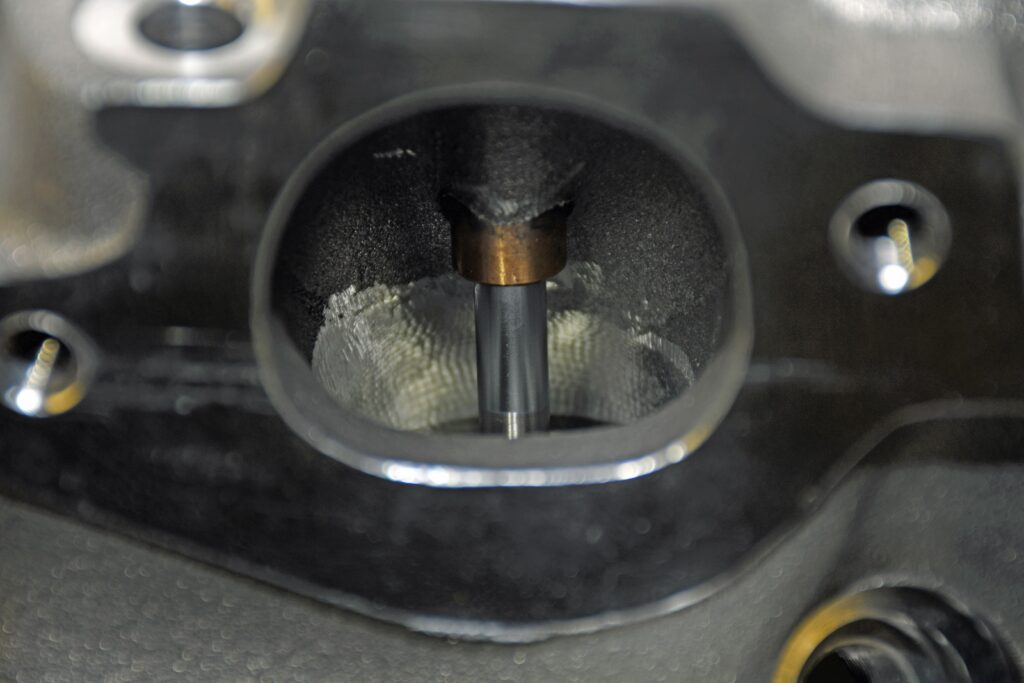
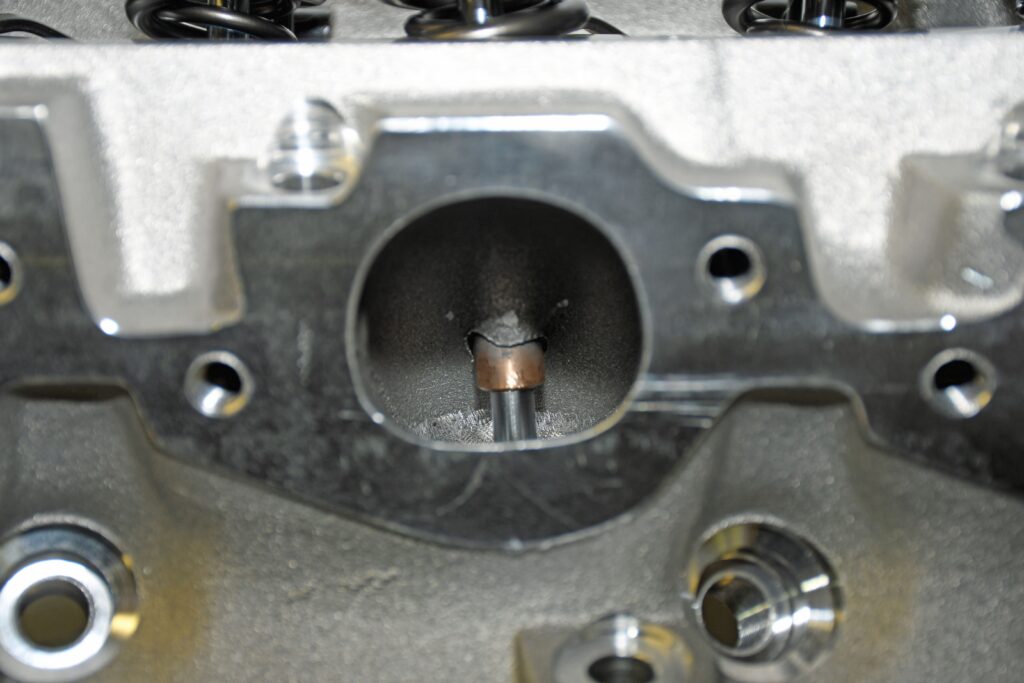

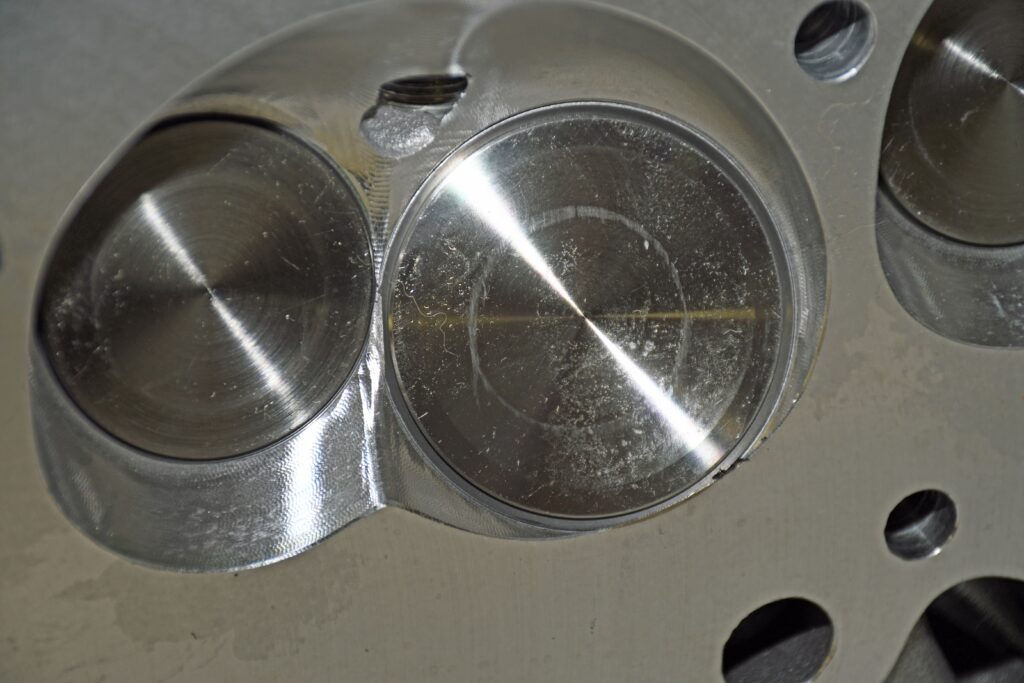


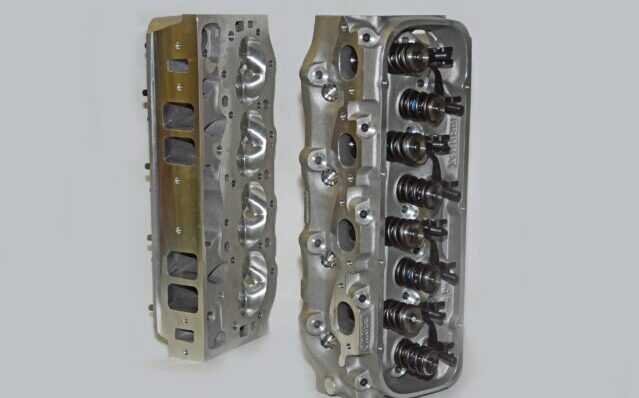
Leave a Reply